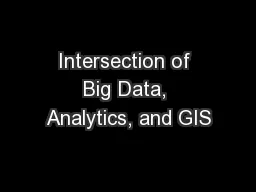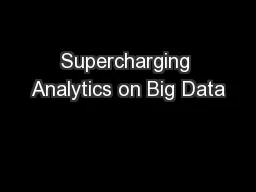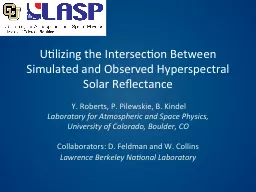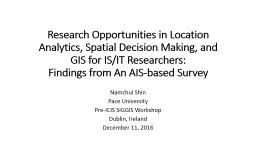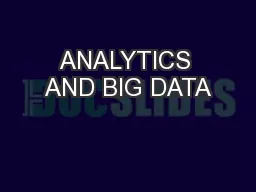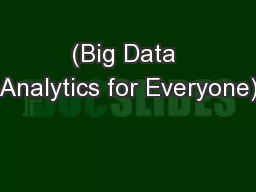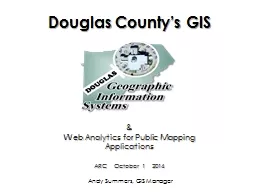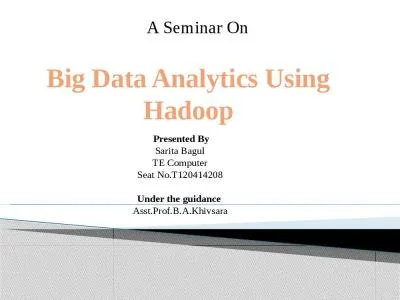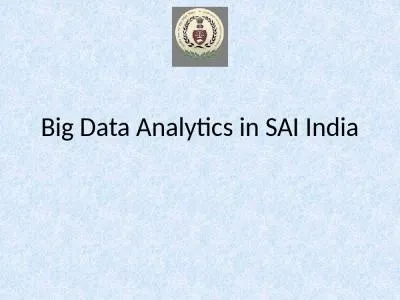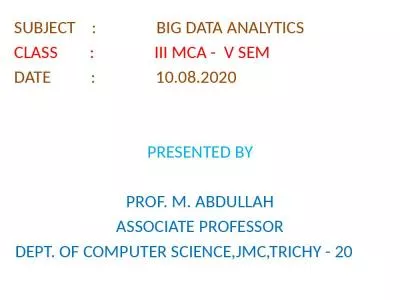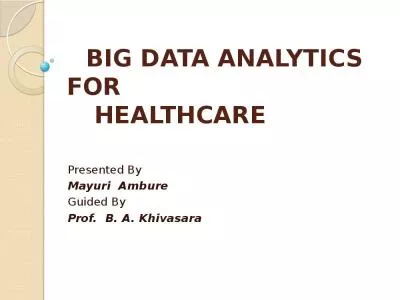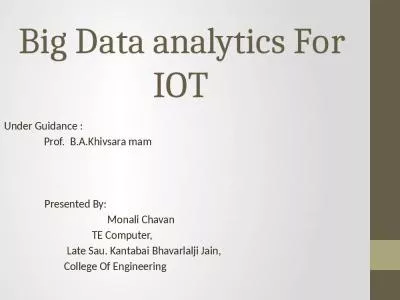PPT-Intersection of Big Data, Analytics, and GIS
Author : olivia-moreira | Published Date : 2018-11-10
James Pick and Namchul Shin 1 Definition of Spatial Big Data Big Data are data sets that are so big they cannot be handled efficiently by common database management
Presentation Embed Code
Download Presentation
Download Presentation The PPT/PDF document "Intersection of Big Data, Analytics, and..." is the property of its rightful owner. Permission is granted to download and print the materials on this website for personal, non-commercial use only, and to display it on your personal computer provided you do not modify the materials and that you retain all copyright notices contained in the materials. By downloading content from our website, you accept the terms of this agreement.
Intersection of Big Data, Analytics, and GIS: Transcript
Download Rules Of Document
"Intersection of Big Data, Analytics, and GIS"The content belongs to its owner. You may download and print it for personal use, without modification, and keep all copyright notices. By downloading, you agree to these terms.
Related Documents

